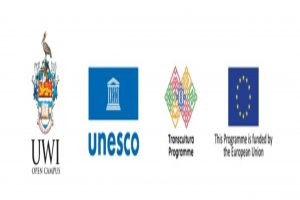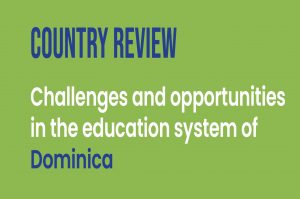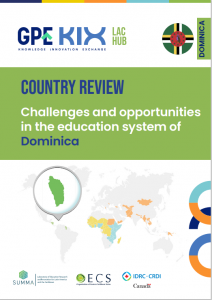Dominica
INICIO
Países
Indicadores
Recursos
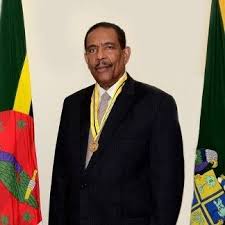
Charles Savarin
President
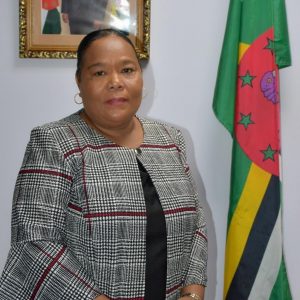
Octavia Alfred
Minister of Education
# Population
10.85 M
# Students
12.471
# Teachers
1.143
# Schools
157
Mean of schooling
Evolution of enrollment
GDP and growth
Government expenditure on education
Evolution of access to basic resources
Political context
Economic and social context
Dominica is in a seismic zone and, like other Caribbean countries, is exposed to tropical storms and hurricanes. Tourism is considered one of the country’s main economic industries, but the closure of the borders as a result of COVID-19 contributed to the economic hardship of its inhabitants.
In terms of population, Dominica is home to people of African, Indo-Caribbean, East Indian and European (Irish, British and French) descent, as well as small groups of Lebanese, Syrians and Asians. It is also characterised by the presence of a very small population of approximately 3,000 Caribs (Kalinagos).
Educational context
The Education Act No. 11 of 1997 – associated with the OECS Harmonised Education Bill – and its amendments provide the regulatory framework for education from pre-primary to higher education.
Education is compulsory for ages 5 to 16. There are approximately 12,500 students in the country, from kindergarten to upper secondary, in 157 educational units with 1,178 teachers. 40% of students are located in the country.
Forty per cent of the students are in rural schools. In kindergarten and pre-primary, education is almost entirely private. By contrast, in primary and secondary education, 97% of students attend public schools. Ensuring full access remains a challenge, particularly at lower socio-economic levels and in upper secondary education.
Source:
Knight, V., Marshall, J., Depradine, K., & Moody-Marshall, R. (2021). Dominica´s country review. Santiago de Chile: SUMMA.
Photo credit: GPE KIX
Find more strategies, research, innovations and evaluations by clicking on see more resources.
Select Indicators
Learn more about the country and the region!
Select and visualise different dimensions, variables, indicators and countries by scrolling through a time range of 20 years, which you can download and share.

